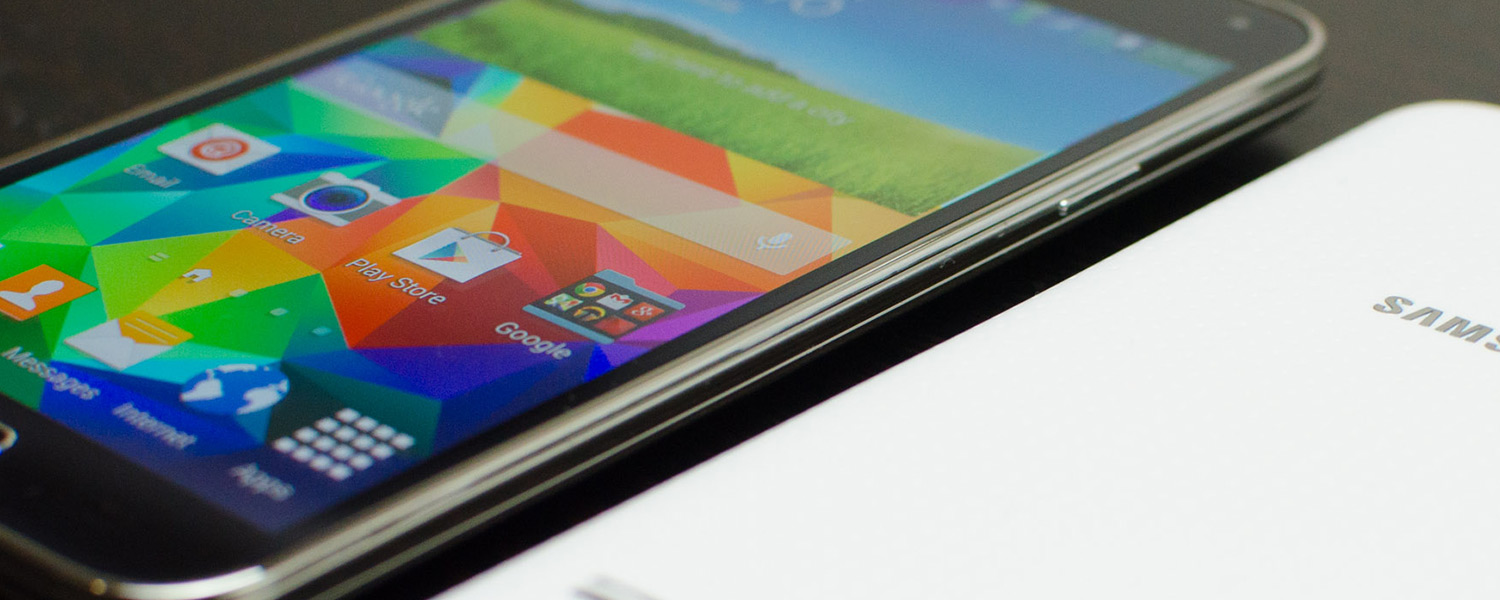Battery Life
The other main differing area between the Snapdragon and Exynos models is energy efficiency. With past smartphones that had both types of SoC, Snapdragon had a pretty significant battery life advantage, usually lasting two to three hours extra during my usage and testing. The new generation of SoCs used in the Galaxy S5 should see this gap close.
The primary way Snapdragon SoCs conserve power is through downclocking cores and even switching them off fully where necessary. Qualcomm has become especially proficient at optimizing their SoCs to boost up to deliver performance as quickly as possible, and the Snapdragon 801 in particular is one of the most power efficient chips I've used.
As far as the Exynos 5422 is concerned, the Cortex-A7 "LITTLE" cores are more power efficient than the Cortex-A15s, so the idea is to use these cores as frequently as possible. Samsung also employs core gating and underclocking to achieve high levels of efficiency, but the main method for conserving energy is offloading low power tasks to the A7s.
In previous Exynos SoCs, this system of relying on the low-power cores has worked to an extent, but hasn't been as effective as Qualcomm's aggressive method. Some of this can be attributed to a lack of HMP in previous chipsets, as the migration process from cluster to cluster consumed energy through the 'copying' of tasks.
Keeping in mind that the size of the battery and the display module used in both Galaxy S5 models is the same, we'll get on to the battery benchmarks, starting with the video playback test.
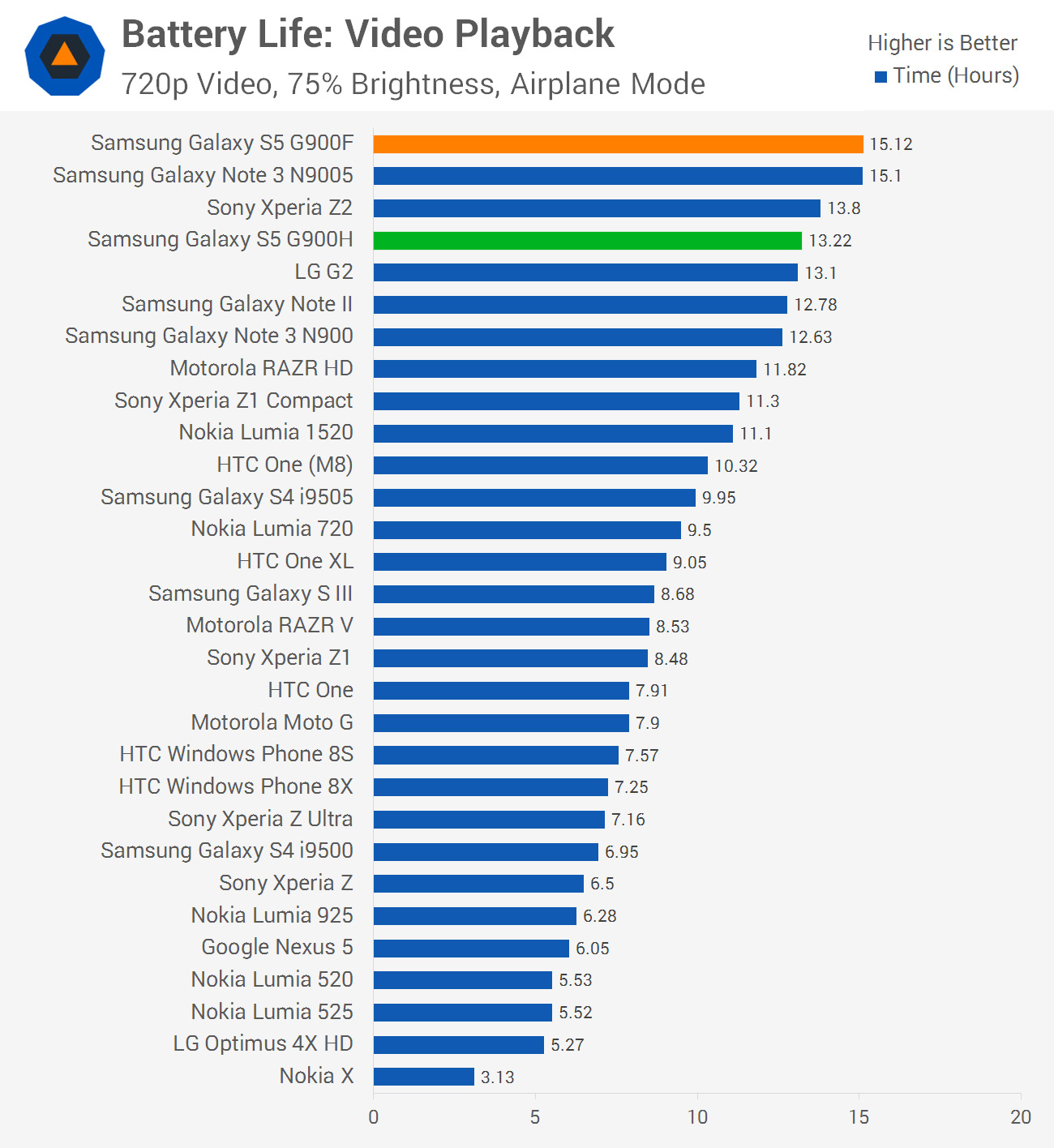
This test - which sees a 720p video looped at 75% brightness, in airplane mode, until the battery dies - isn't overly intensive on high-end chipsets, which include very capable dedicated hardware decoding blocks. Still, the Snapdragon 801 pulls ahead by 14%, lasting nearly an extra two hours longer compared to the Exynos 542.
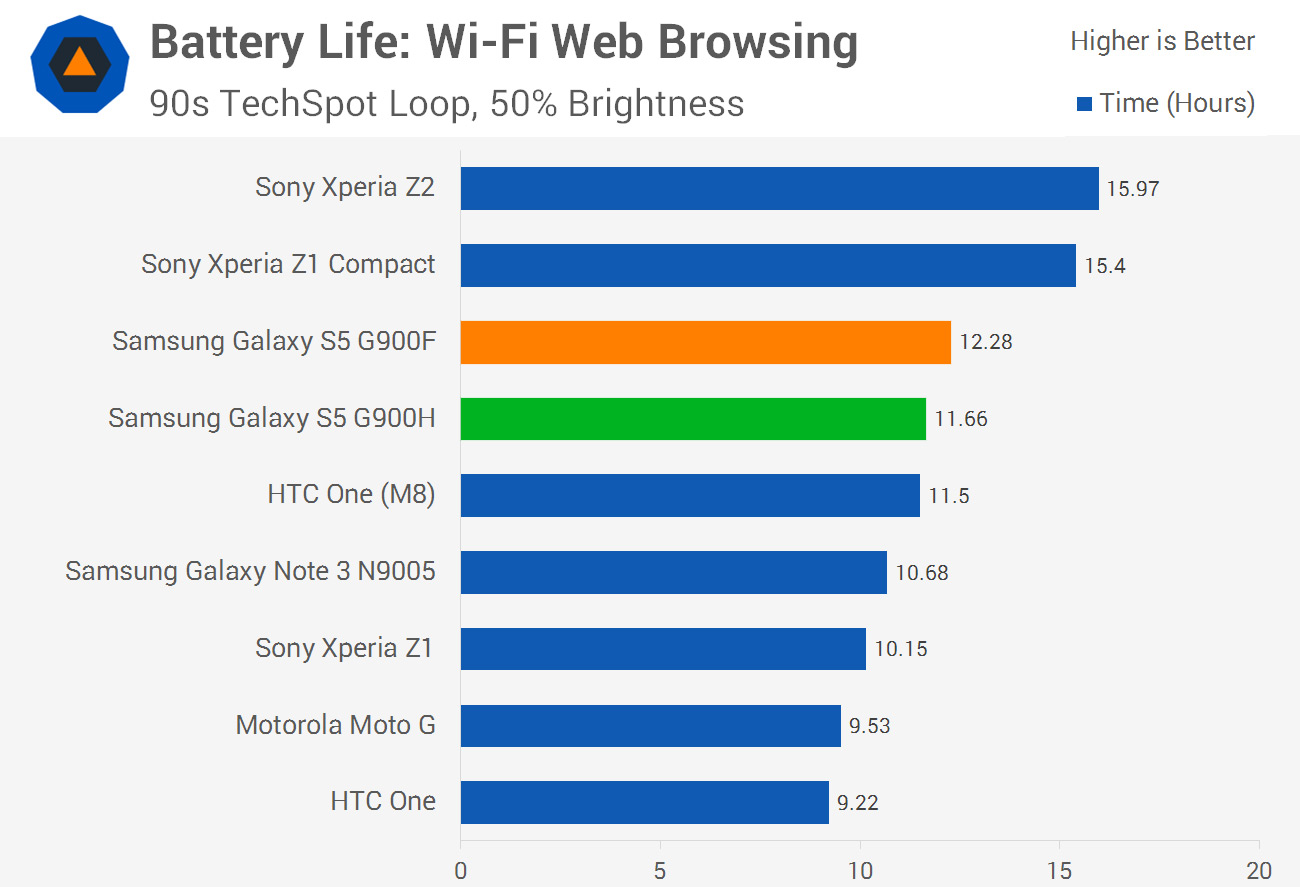
Our usual Wi-Fi benchmark is particularly interesting, as the Qualcomm Snapdragon 801 has an integrated Wi-Fi modem, whereas the Samsung Exynos 5 Octa uses an external chip for all connectivity. Here the Snapdragon 801 has a small, 5% battery life advantage, although both devices perform very well in lasting longer than 11 hours.
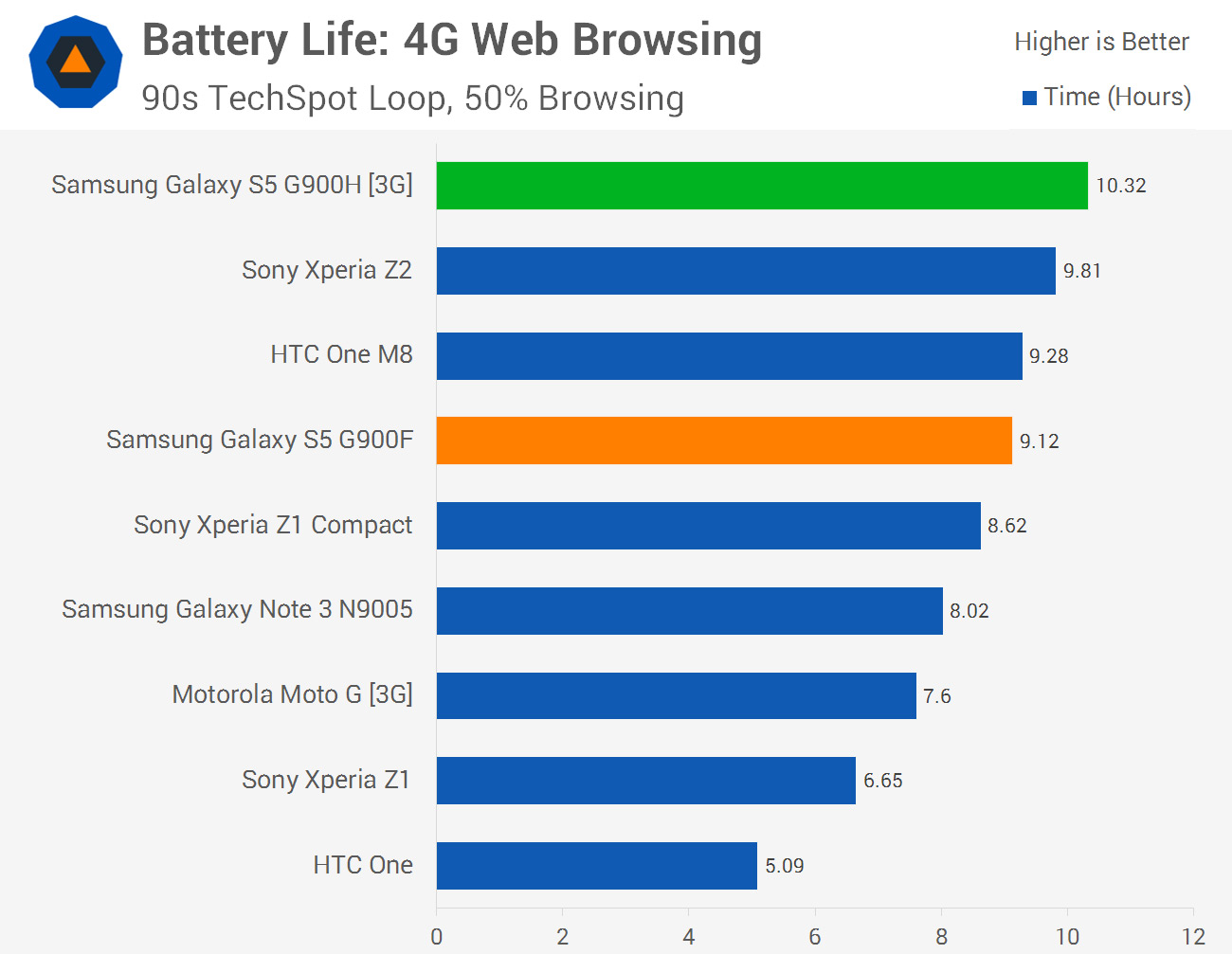
With the G900F supporting LTE and the G900H only supporting HSPA+, our usual cellular web browsing battery benchmark isn't as useful as if both supported LTE. However, you can see that if you're using the maximum connection speeds available to you, the Exynos-powered G900H will last around an hour (or 13%) longer.
If you only have access to HSPA+ networks on the G900F, I'd estimate both devices will last a very similar amount of time, as browsing on LTE consumes more energy.
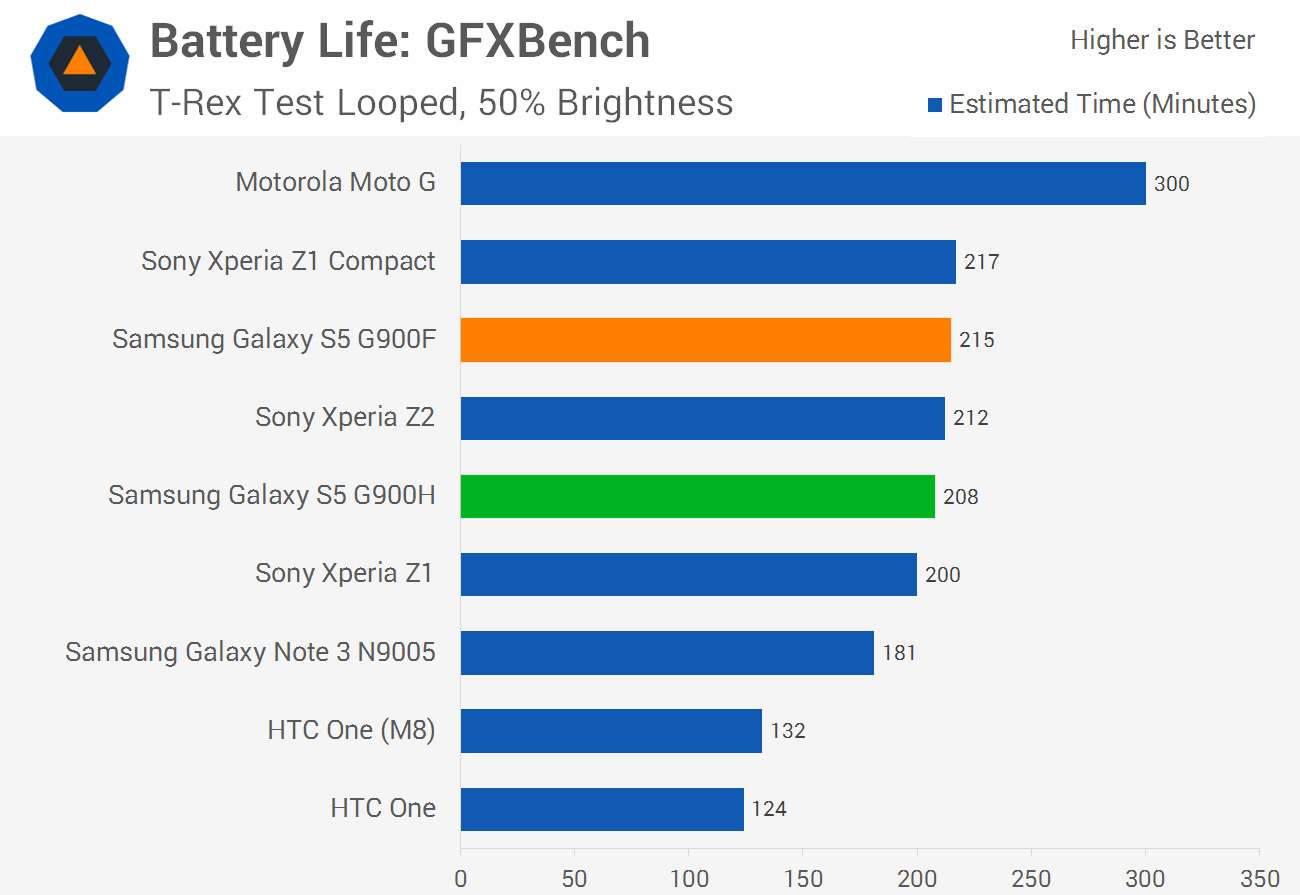
When playing intense 3D games or doing other high performance tasks, both the G900F and G900H will last a very similar amount of time. The Snapdragon 801 pulled ahead here by 3%, but the gap is small enough to be discounted as benchmark variance.
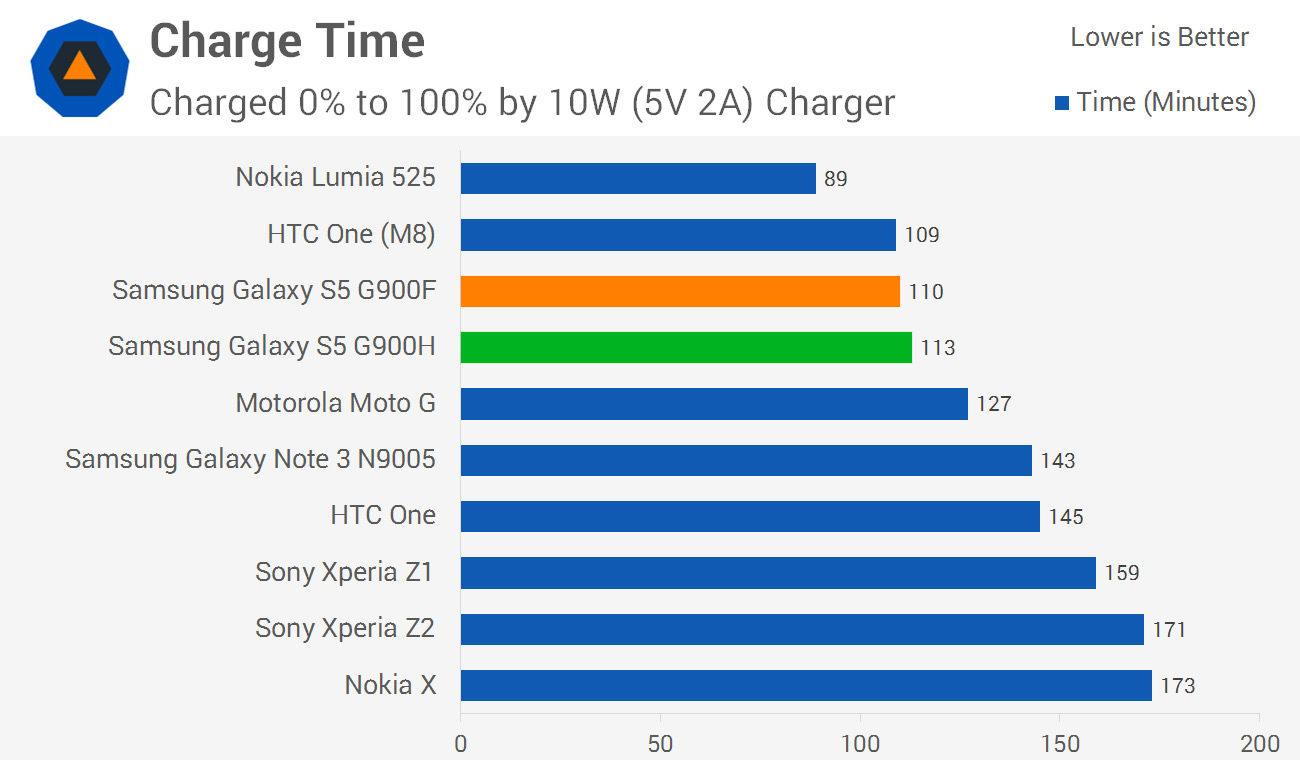
Again with charge time, we see very little difference, indicating both devices will charge in essentially the same amount of time from a 10W charger.
